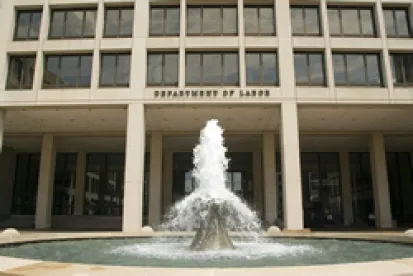In President Biden’s first 48 hours on the job, he issued approximately 30 executive orders. One of these is an Executive Order on Protecting Worker Health and Safety. The Order, as the title implies, directs the federal government to “take swift action to reduce the risk that workers may contract COVID-19 in the workplace.” The Order further requires the issuance of “science-based guidance” to achieve this goal.
Under the Order, the Secretary of Labor (Al Stewart was designated as the Acting Secretary of Labor, effective January 20, 2021, pending Senate confirmation of the nominee, Boston Mayor Marty Walsh) is to:
-
By February 4 - issue “revised guidance to employers on workplace safety during the COVID-19 pandemic;”
-
Consider whether emergency temporary workplace standards are necessary, including wearing masks in the workplace – and, if deemed necessary – to issue the new standard by March 15;
-
Undertake a review of OSHA’s present enforcement efforts, and determine whether immediate or long-term changes are necessary to “better protect workers and to ensure equity in enforcement;”
-
Launch a national enforcement effort focused on COVID-19-related violations that put the largest number of workers at serious risk or are contrary to anti-retaliation principles; and,
-
Coordinate a multidepartmental, multilingual outreach campaign to educate workers on their rights under the safety and health laws, including through engagement with labor unions, community organizations and industries – with a special emphasis on communities that have been the hardest hit by the pandemic.
OSHA (the Occupational Safety and Health Administration) has a comprehensive web page devoted to COVID-19, which includes identification of applicable regulations, enforcement memoranda, recording and reporting requirements, links to various pandemic-related “tools” and “resources,” as well as specific workplace guidance by industry.
To date, OSHA had not issued any new temporary or other regulatory standards applicable to workplaces aimed specifically at COVID-19. Rather, OSHA’s principal deputy assistant secretary under the Trump administration, Loren Sweatt, testified to Congress in 2020 that OSHA did not believe such new standards were necessary because “OSHA has standards in place to protect employees and employers who fail to take appropriate steps to protect their employees may be violating them. Such standards include conducting hazard assessments, ensuring sanitation and cleanliness, providing PPE, and requiring training and education, as well as the general duty clause itself.”
As the number of fatalities in the U.S. has more recently climbed exponentially, it is very likely that OSHA, under the Biden administration, will proceed in a different direction. Stay tuned for further developments.




 />i
/>i
